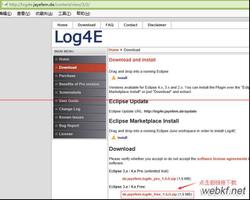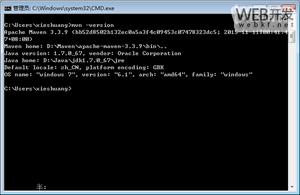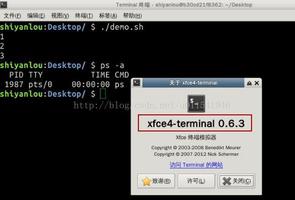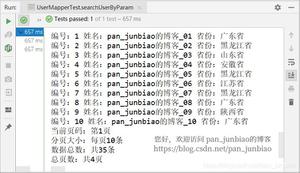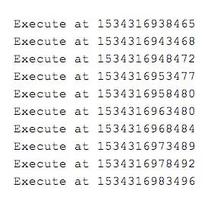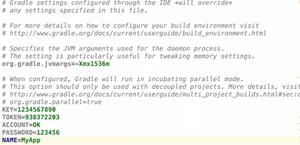文件随时多版本备份:seafile的安装配置和使用

安装前的准备工作
本人办公的局域网内有一台多功能服务器,centos7的,安装了杂七杂八的服务器软件,我觉得多一个 seafile 也没啥。况且有个分区(/dev/sda4)100G,空着的,正好作为网盘存放区。划重点:Linux服务器(这里是centos7),大容量的文件夹(这里是一个空的分区)。
假设你已经安装好 centos7 服务器了,如果你的空白分区(这里假设为*/dev/sda4*,根据自己实际情况,修改下面相关内容)没有格式化,不妨使用如下命令。硬盘有价,数据无价,如果该分区有内容,请提前做好备份,在你不是很懂Linux命令的情况下,强烈建议不要随意执行下面的命令。
$ sudo mkfs.xfs /dev/sda4解释
- 上面的语句实现对分区 /dev/sda4 格式化为
xfs文件系统的分区。关于xfs文件系统的详细知识,可以百度,或者参考第@ef(chap:filesystem)章(TODO:该章貌似没有xfs内容的介绍!!!)。当然也可用使用其他文件系统,这里只是以xfs为例。
接下来挂载该分区到*/data*文件夹。如果没有该文件夹,首先创建,
$ sudo mkdir /data使用命令blkid,查看*/dev/sda4*分区的UUID,这是设备的唯一标识。
$ sudo blkid /dev/sda4就会输出类似UUID="78cb6878-fa34-4cee-9d17-27e24d425fcc"的内容,然后编辑 /dev/fstab 文件,
$ sudo vim /etc/fstab加入一行,确保开机就可以挂载该分区。当然本电脑早就挂载好了。如果需要的话,可以重启电脑了。
UUID=78cb6878-fa34-4cee-9d17-27e24d425fcc /data xfs defaults 0 0安装步骤
这里安装的是社区版Linux服务器端。首先要安装配置数据库,这里采用MariaDB数据库,其实还可以使用MySQL和SQLite数据库。详情请参考官网。下面前几节都是在Linux下的操作。
方案一:安装配置 MariaDB 数据库
$ sudo yum update -y$ sudo yum install mariadb-server -y
$ sudo systemctl start mariadb
$ sudo mysql_secure_installation
解释
- 第一行是更新软件源
- 第二行是安装 MariaDB 服务器软件
- 第三行是启动 MariaDB 服务
- 第四行是安全配置 MariaDB,输入回车后,弹出如下的对话框进行配置。
NOTE: RUNNING ALL PARTS OF THIS SCRIPT IS RECOMMENDED FOR ALL MariaDB SERVERS IN PRODUCTION USE! PLEASE READ EACH STEP CAREFULLY!
In order to log into MariaDB to secure it, we"ll need the current
password for the root user. If you"ve just installed MariaDB, and
you haven"t set the root password yet, the password will be blank,
so you should just press enter here.
Enter current password for root (enter for none):
OK, successfully used password, moving on...
Setting the root password ensures that nobody can log into the MariaDB
root user without the proper authorisation.
Set root password? [Y/n]
New password:
Re-enter new password:
Password updated successfully!
Reloading privilege tables..
... Success!
By default, a MariaDB installation has an anonymous user, allowing anyone
to log into MariaDB without having to have a user account created for
them. This is intended only for testing, and to make the installation
go a bit smoother. You should remove them before moving into a
production environment.
Remove anonymous users? [Y/n]
... Success!
Normally, root should only be allowed to connect from "localhost". This
ensures that someone cannot guess at the root password from the network.
Disallow root login remotely? [Y/n]
... Success!
By default, MariaDB comes with a database named "test" that anyone can
access. This is also intended only for testing, and should be removed
before moving into a production environment.
Remove test database and access to it? [Y/n]
- Dropping test database...
... Success!
- Removing privileges on test database...
... Success!
Reloading the privilege tables will ensure that all changes made so far
will take effect immediately.
Reload privilege tables now? [Y/n]
... Success!
Cleaning up...
All done! If you"ve completed all of the above steps, your MariaDB
installation should now be secure.
Thanks for using MariaDB!
稍懂英文的,上面的不难,除了在New password: 一行和接下来的一行,输入要设置的数据库root用户的密码外,其他行基本是一路回车就可以了。上面完成了 MariaDB 服务的配置。
方案二:已经安装了XAMPP或者MySQL、MariaDB
本人服务器上之前就安装了XAMPP,开启 XAMPP,当时MariaDB都是默认配置的,现在修改一下root用户的密码。就不用另外安装MariaDB了。MySQL与此类似,这里不再赘述。
下载 seafile 服务器端安装包
到官网下载Linux服务器端,也可用使用命令下载。
$ wget http://seafile-downloads.oss-cn-shanghai.aliyuncs.com/seafile-server_7.0.5_x86-64.tar.gz因为是放在服务器多人使用的,选择了当前较新的相对稳定的7.0.5版本。假设上述文件下载到了 /home/litianci/ 目录,下面开始安装。
安装 seafile 服务器端安装包
$ su -# mkdir /opt/seafile
# cd /opt/seafile
# tar -xzf /home/litianci/seafile-server_7.0.5_x86-64.tar.gz
# mv seafile-server-7.0.5/ seafile-server
# yum install python python-setuptools MySQL-python python-urllib3 python-ldap -y
# cd seafile-server/
# ./setup-seafile-mysql.sh
输入上述命令后,就进入安装的字符界面。
Checking python on this machine ... Checking python module: python-mysqldb ... Done.
-----------------------------------------------------------------
This script will guide you to setup your seafile server using MySQL.
Make sure you have read seafile server manual at
https://github.com/haiwen/seafile/wiki
Press ENTER to continue
-----------------------------------------------------------------
What is the name of the server? It will be displayed on the client.
3 - 15 letters or digits
[ server name ] bubifengyun
What is the ip or domain of the server?
For example: www.mycompany.com, 192.168.1.101
[ This server"s ip or domain ] 192.168.0.101
Where do you want to put your seafile data?
Please use a volume with enough free space
[ default "/opt/seafile/seafile-data" ] /data/seafile-data
Which port do you want to use for the seafile fileserver?
[ default "8082" ]
-------------------------------------------------------
Please choose a way to initialize seafile databases:
-------------------------------------------------------
[1] Create new ccnet/seafile/seahub databases
[2] Use existing ccnet/seafile/seahub databases
[ 1 or 2 ] 1
What is the host of mysql server?
[ default "localhost" ]
What is the port of mysql server?
[ default "3306" ]
What is the password of the mysql root user?
[ root password ]
verifying password of user root ... done
Enter the name for mysql user of seafile. It would be created if not exists.
[ default "seafile" ]
Enter the password for mysql user "seafile":
[ password for seafile ]
Enter the database name for ccnet-server:
[ default "ccnet-db" ]
Enter the database name for seafile-server:
[ default "seafile-db" ]
Enter the database name for seahub:
[ default "seahub-db" ]
---------------------------------
This is your configuration
---------------------------------
server name: bubifengyun
server ip/domain: 192.168.0.101
seafile data dir: /data/seafile-data
fileserver port: 8082
database: create new
ccnet database: ccnet-db
seafile database: seafile-db
seahub database: seahub-db
database user: seafile
---------------------------------
Press ENTER to continue, or Ctrl-C to abort
---------------------------------
Generating ccnet configuration ...
done
Successly create configuration dir /opt/seafile/ccnet.
Generating seafile configuration ...
Done.
done
Generating seahub configuration ...
----------------------------------------
Now creating ccnet database tables ...
----------------------------------------
----------------------------------------
Now creating seafile database tables ...
----------------------------------------
----------------------------------------
Now creating seahub database tables ...
----------------------------------------
creating seafile-server-latest symbolic link ... done
-----------------------------------------------------------------
Your seafile server configuration has been finished successfully.
-----------------------------------------------------------------
run seafile server: ./seafile.sh { start | stop | restart }
run seahub server: ./seahub.sh { start <port> | stop | restart <port> }
-----------------------------------------------------------------
If you are behind a firewall, remember to allow input/output of these tcp ports:
-----------------------------------------------------------------
port of seafile fileserver: 8082
port of seahub: 8000
When problems occur, Refer to
https://github.com/haiwen/seafile/wiki
for information.
根据自己需要就可以安装完成了。本文使用时,服务器IP地址为 192.168.0.101,
配置 seafile 服务
注意:7.0.x 版本之后,8000端口默认监听在127.0.0.1地址上,这意味着您无法直接通过8000端口访问Seafile服务。建议您配置nginx反向代理。
恭喜! 现在你已经成功的安装了 Seafile 服务器.
--- 官网提示
我感觉没有必应那么复杂。可以直接修改*/opt/seafile/conf/gunicorn.conf*,把IP地址改为服务器的IP地址即可。
# vim /opt/seafile/conf/gunicorn.conf把其中的
# default localhost:8000bind = "127.0.0.1:8000"
改为本服务器的IP地址,
# default localhost:8000bind = "192.168.0.101:8000"
运行 seafile、seahub 服务
其实从安装的提示里就已经提示如何启动、停止和重启服务了。
Your seafile server configuration has been finished successfully.
run seafile server: ./seafile.sh { start | stop | restart }
run seahub server: ./seahub.sh { start <port> | stop | restart <port> }
If you are behind a firewall, remember to allow input/output of these tcp ports:
port of seafile fileserver: 8082
port of seahub: 8000
首先开启防火墙上的TCP/8082和TCP/8000端口。
# firewall-cmd --permanent --zone=public --add-port=8082/tcp# firewall-cmd --permanent --zone=public --add-port=8082/tcp
# firewall-cmd --reload
接着打开 seafile 和 seahub 服务。
# /opt/seafile/seafile-server-latest/seafile.sh start[03/14/20 08:07:55] ../common/session.c(132): using config file /opt/seafile/conf/ccnet.conf
Starting seafile server, please wait ...
** Message: seafile-controller.c(718): No seafevents.
Seafile server started
Done.
开启 seafile 基本没啥问题。下面是开启seahub的命令,第一次会让你配置管理员邮箱和密码的。本文配置为bubifengyun@sina.com
# /opt/seafile/seafile-server-latest/seahub.sh startLC_ALL is not set in ENV, set to en_US.UTF-8
Starting seahub at port 8000 ...
----------------------------------------
It"s the first time you start the seafile server. Now let"s create the admin account
----------------------------------------
What is the email for the admin account?
[ admin email ] bubifengyun@sina.com
What is the password for the admin account?
[ admin password ]
Enter the password again:
[ admin password again ]
----------------------------------------
Successfully created seafile admin
----------------------------------------
Seahub is started
Done.
局域网访问 seafile 服务
此时在局域网其他电脑就可以使用浏览器直接访问 seafile 的网页页面了。一般都是采用火狐或者谷歌浏览器,IE浏览器貌似不好用,本服务器地址为: http://192.168.0.101:8000/ 界面如下图所示。
knitr::include_graphics("seafile-seahub-login.png")这时就可以使用刚才填写的账户bubifengyun@sina.com及密码登录该网站。在网站里怎么配置语言和其他的内容,这里从略。
开机自启动 seafile 服务
这里完全参照官网和英文网页。
创建 seafile 用户,家目录~为*/opt/seafile*,并把*/data/seafile-data/* 也过继给 seafile 用户。
# useradd -U -m -d /opt/seafile seafile# chown -R seafile:seafile /opt/seafile /data/seafile-data/
创建*/etc/systemd/system/seafile.service* 文件,
# vim /etc/systemd/system/seafile.service其中内容如下,
[Unit]Description=Seafile
# add mysql.service or postgresql.service depending on your database to the line below
After=network.target mariadb.service
[Service]
Type=oneshot
ExecStart=/opt/seafile/seafile-server-latest/seafile.sh start
ExecStop=/opt/seafile/seafile-server-latest/seafile.sh stop
RemainAfterExit=yes
User=seafile
Group=seafile
[Install]
WantedBy=multi-user.target
创建*/etc/systemd/system/seahub.service* 文件,
# vim /etc/systemd/system/seahub.service其中内容如下,
[Unit]Description=Seafile hub
After=network.target seafile.service
[Service]
# change start to start-fastcgi if you want to run fastcgi
ExecStart=/opt/seafile/seafile-server-latest/seahub.sh start
ExecStop=/opt/seafile/seafile-server-latest/seahub.sh stop
User=seafile
Group=seafile
Type=oneshot
RemainAfterExit=yes
[Install]
WantedBy=multi-user.target
接下来让mariadb, seafile, seahub服务开机自启动。
# systemctl enable mariadb.service# systemctl enable seafile.service
# systemctl enable seahub.service
同时删除 root 用户产生的cache文件,避免跟 seafile 用户产生权限问题。
# rm /tmp/seahub_cache/ -rf接下来重启服务器或者输入下面的命令,看看局域网的其他电脑还能通过浏览器访问该网站。
# systemctl daemon-reload# systemctl start seahub
使用 memcached
官网说:安装 Memcached 能够显著提高系统性能。下面先安装配置 memcached,
# yum install memcached libffi-devel -y# systemctl enable --now memcached
接下来编辑*/opt/seafile/conf/seahub_settings.py*
# vim /opt/seafile/conf/seahub_settings.py在末尾加上,
CACHES = { "default": {
"BACKEND": "django_pylibmc.memcached.PyLibMCCache",
"LOCATION": "127.0.0.1:11211",
},
"locmem": {
"BACKEND": "django.core.cache.backends.locmem.LocMemCache",
},
}
COMPRESS_CACHE_BACKEND = "locmem"
删除 /opt/seafile/conf/seahub_settings.pyc 文件,并重启seahub服务。
# rm -f /opt/seafile/conf/seahub_settings.pyc# systemctl restart seahub
seafile 客户端介绍
seafile 客户端的安装和配置
参考官网,Windows用户可以直接下载安装包进行安装,这里不再赘述。在 Deepin 下可以直接安装
$ sudo apt-get install seafile-gui -y完成后,按下Super键或者左下角深度的图标,在应用程序里找到Seafile的图标,点击即可弹出类似下图的选择文件保存目录的窗口,
knitr::include_graphics("seafile-desktop-choose-dir.png")可以根据你的喜好设置,本文保持默认不变。接下来是配置客户端,这里只填写了上面seahub服务的网址,以及管理员账户,点击登录即可。
knitr::include_graphics("seafile-desktop-network-setting.png")Seafile桌面同步端暂时还不具备用户注册功能,只可以在网页上注册账户,注册后可以在这里登录。登录完成后,就会弹出如下图的界面,
knitr::include_graphics("seafile-desktop-main-menu.png")seafile 客户端的功能和使用
对于办公用户来说,最怕的是电脑突然崩溃,文件无法找回。另外文件版本混乱,我们自己都搞不清楚哪个是最新版本了,常常提交了错误版本。针对这个问题,我们主要使用 seafile 的同步功能和版本控制功能。关于 seafile 的更多功能,请参考官网特性介绍。
在图@ref(fig:seafile-desktop-main-menu)中,下方有个选择文件夹或拖到这里同步,就可以把你保持同步的文件夹拖到这里来。当你在这个文件夹里编辑文件保存时,seafile会自动把你的文件同步到服务器中,前提是你不能退出seafile桌面同步客户端,但你可以最小化。当你需要查看该文件的历次版本信息时,就可以登录到seafile网页上,如下图所示点击红色框的历史,
knitr::include_graphics("seafile-seahub-history.png")这个时候就会弹出如下图所示的界面,你就可以根据需要下载之前的版本了。
knitr::include_graphics("seafile-seahub-history-detail.png")以上是 文件随时多版本备份:seafile的安装配置和使用 的全部内容, 来源链接: utcz.com/z/514399.html

